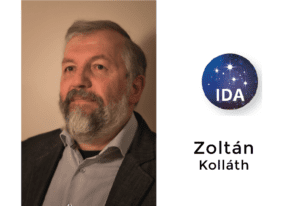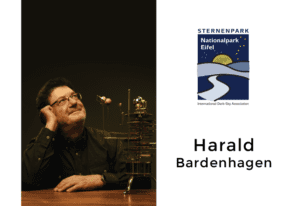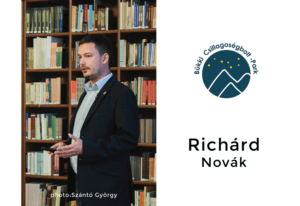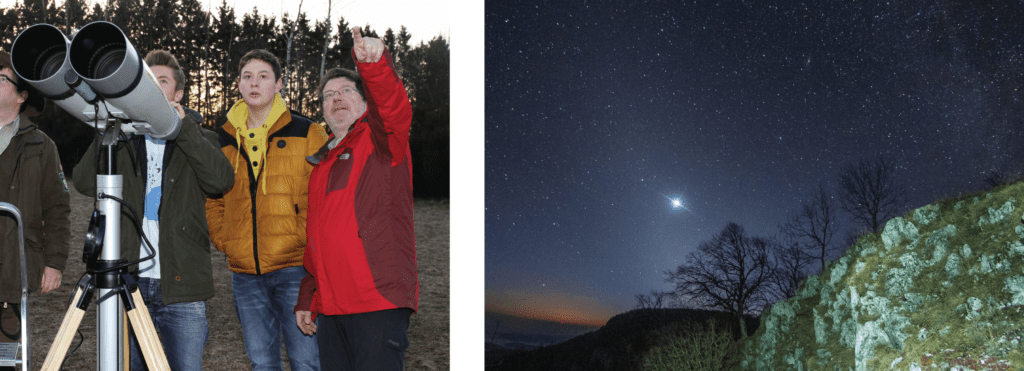Night vision: a webinar about Dark Sky Parks
Milky Way by Nuno Andre Moura
Join the next EUROPARC webinar about Dark Sky Parks. Every month, we dedicate a webinar to a special topic for Protected Area professionals. Read more about it here.
80% of the world population lives under light-polluted skies (99% when it comes to Europe and the U.S.), according to the “new world atlas of artificial night sky brightness”. Artificial light is the number one pollutant of our skies and despite the scientific research produced over the last decade on how it negatively impacts biodiversity and human health, levels of light pollution continue to rise across the globe. One-third of the humanity has never had the chance to see the Milky Way and many will never experience conditions resembling a true night. This is where Protected Areas, as safe places for nature and biodiversity, have a role to play.
Many European Protected Areas are already actively decreasing light pollution, ensuring better conditions for nocturnal species and offering new experiences to their visitors. In this webinar, we will learn about the process and criteria to become a Dark Sky Place, by the International Dark-Sky Association, and hear the practical examples of two National Parks from our network, that are Dark Sky Parks certified.
Can Parks create better conditions for species, through good outdoor lightning? Which type of educational programmes & touristic activities can be organised to increase the value of our dark skies?
Either you want to decrease light pollution in your Protected Area, or you are already a Dark Sky Park, we invite you to join us in this interactive webinar to share your experience and contribute in the debate. Participation is free, but registration is needed.
>>>>>REGISTER HERE<<<<<
Setting the scene
International Dark-Sky Places: rules and practices
The International Dark-Sky Association (IDA) plays a vital role in preserving dark sky and protecting the natural night-time environment. An essential part of this work is the darks sky places programme. Our first invited speaker, Zoltán Kolláth, is member of the IDA’s Dark Sky Places Committee, he will introduce us the importance of protecting the night-time environment; and share the process on how to create and manage a Dark Sky Park. Zoltán will refer the main criteria to develop an international dark sky place, share methodologies to measure the quality of the night sky and the main important rules to avoid light pollution.

Zoltan is also Professor of Physics at the Eötvös Loránd University (HU) and President of the Hungarian Astronomical Association. His main field of research is astrophysics and pulsating stars, but he has been working on light pollution related projects for over two decades.
Case Study
The value of the Dark Skies above the Eifel National Park
The Eifel National Park was certified by IDA in 2014, becoming the first National Park in Germany obtaining the Dark Sky Park certification. We will hear, from the perspective of an astronomer, why a “dark sky” and stargazing activities are so important to people. Harald Bardenhagen will also show us how a Park can work on light pollution abatement, and give us an overview of the most successful outreach activities he has practised over the last 10 years.

Harald Bardenhagen, astronomer and consultant for low impact lighting, founded the Astronomie-Werkstatt “Sterne ohne Grenzen” about 10 years ago, to bring back the direct nature experience of a starry night sky to people. He was a key person in the Dark Sky Park Eifel National Park Certification and currently operates an observatory with about 100 public event offerings per year with about 5000 bookings.
Case study
Starry Sky Park in the Bükk National Park, Hungary
Bükk Starry Sky Park became a Dark Sky Park in 2017. It all started with a touristic demand for astronomical programmes, which prompted them to evaluate their sky quality and realise it was of exceptional quality. Richárd Novák will briefly share with us the 3-years process of preparations, replacements and measurements that made them become the 49th IDA recognised Dark Sky Park of the world.
With the growing number of visitors interested in the national park demanding night time stargazing’s and night walks, they created a new title for the Park and developed a new destination for tourism. The success is visible, and recently, the Hungarian government has decided to build the country’s newest observatory and astronomical visitor center in the heart of the Park, in the village of Répáshuta.

Richárd Novák is Education specialist at the Bükk National Park Directorate, working in the past 8 years as a tour guide and environmental educator. Interested in astronomy since his childhood, he is now the one who reveals wonders of the sky to their students and visitors and will lead the forthcoming astronomical visitor centre.

Education activity by Harald Bardenhagen (left) Bukk National Park by Richar Novak